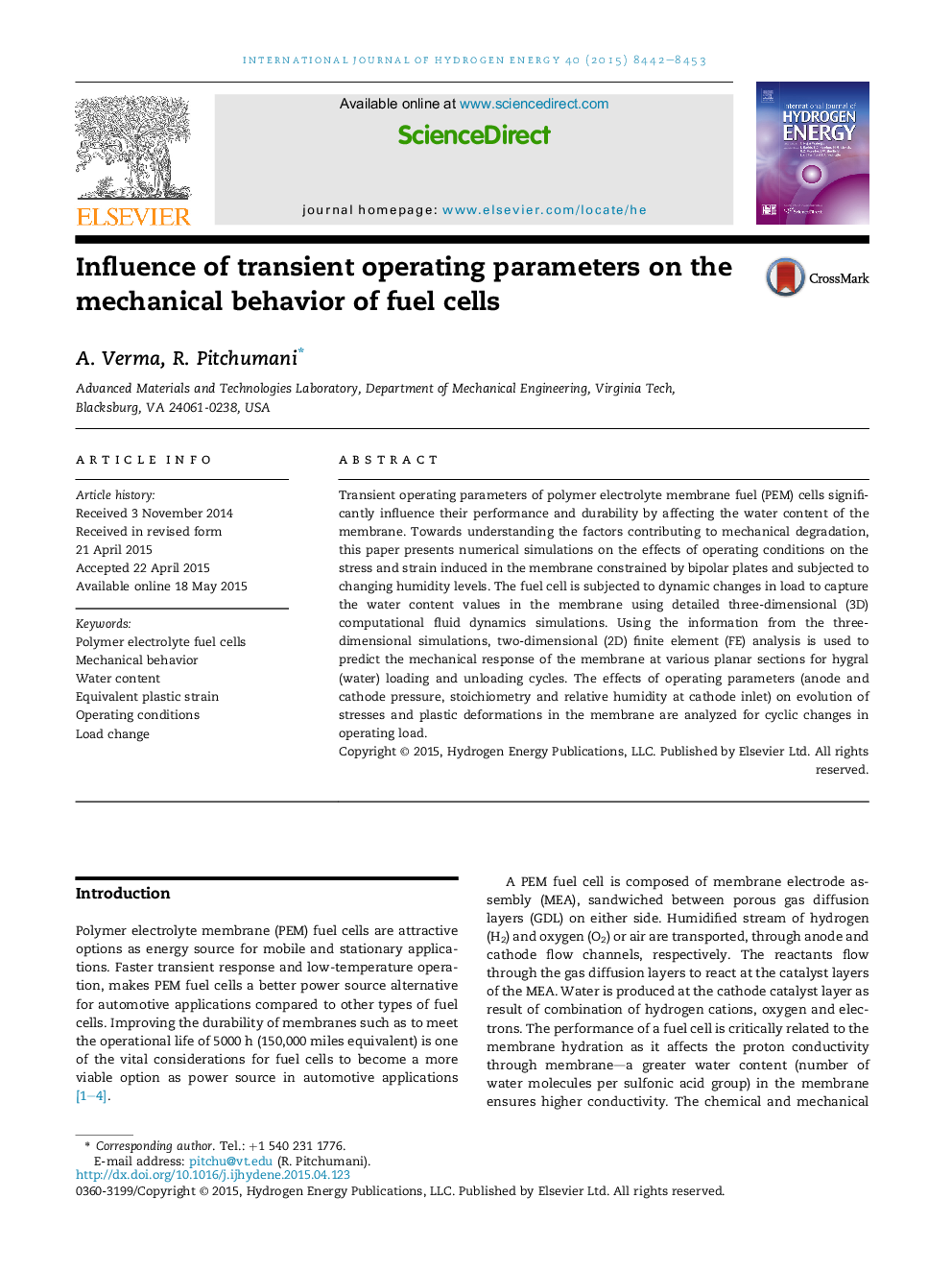| Article ID | Journal | Published Year | Pages | File Type |
|---|---|---|---|---|
| 1270724 | International Journal of Hydrogen Energy | 2015 | 12 Pages |
•Presents a detailed computational modeling of mechanical behavior of membranes.•Analyzes effects of operating parameters on the plastic strain and volumetric deformation of membranes.•Presents design windows and optimum operating parameters to minimize membrane degradation.
Transient operating parameters of polymer electrolyte membrane fuel (PEM) cells significantly influence their performance and durability by affecting the water content of the membrane. Towards understanding the factors contributing to mechanical degradation, this paper presents numerical simulations on the effects of operating conditions on the stress and strain induced in the membrane constrained by bipolar plates and subjected to changing humidity levels. The fuel cell is subjected to dynamic changes in load to capture the water content values in the membrane using detailed three-dimensional (3D) computational fluid dynamics simulations. Using the information from the three-dimensional simulations, two-dimensional (2D) finite element (FE) analysis is used to predict the mechanical response of the membrane at various planar sections for hygral (water) loading and unloading cycles. The effects of operating parameters (anode and cathode pressure, stoichiometry and relative humidity at cathode inlet) on evolution of stresses and plastic deformations in the membrane are analyzed for cyclic changes in operating load.
